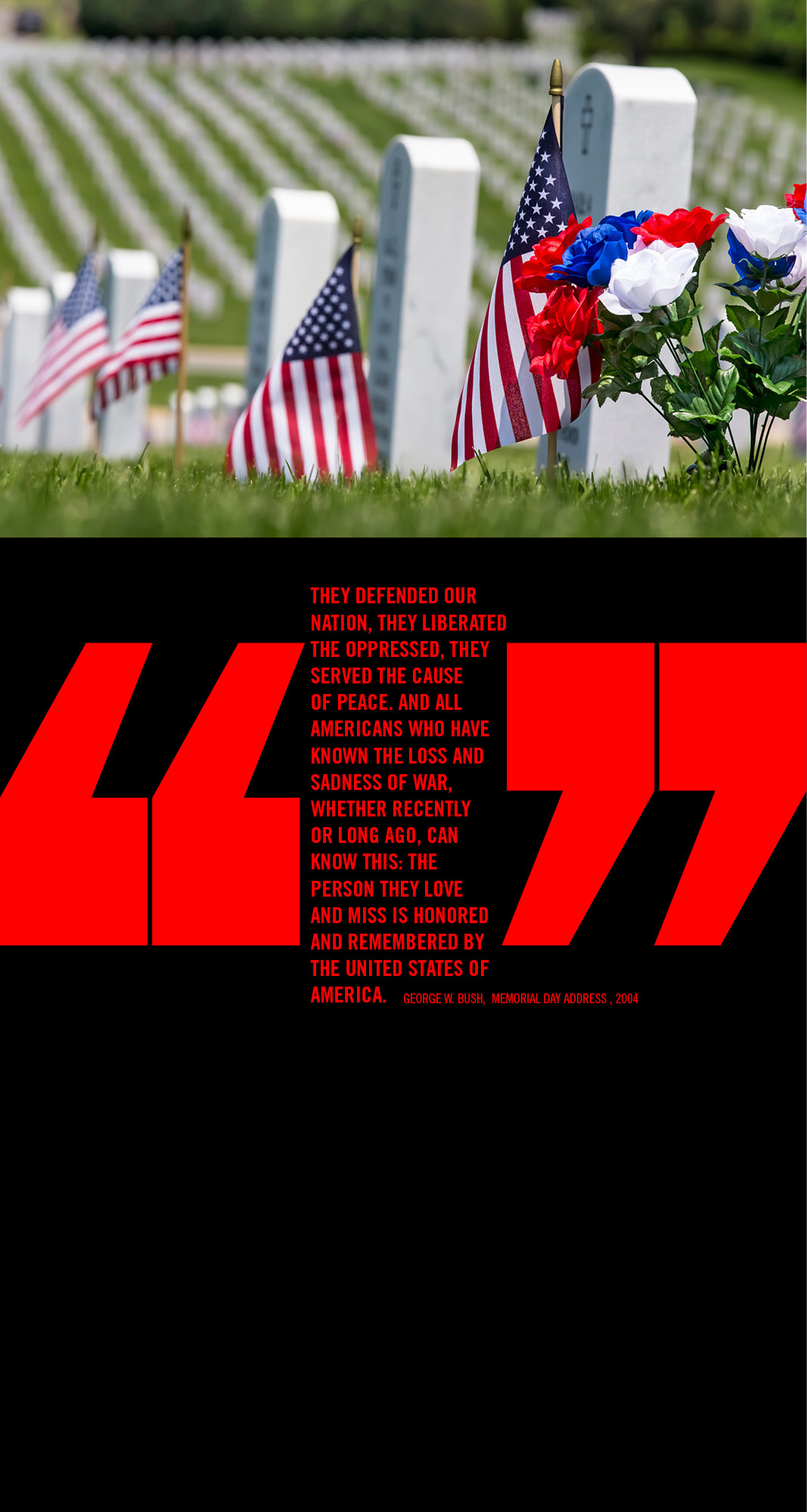Memorial Day
/0 Comments/in Friday Afternoon, Memorial Day /by Steve Kowalski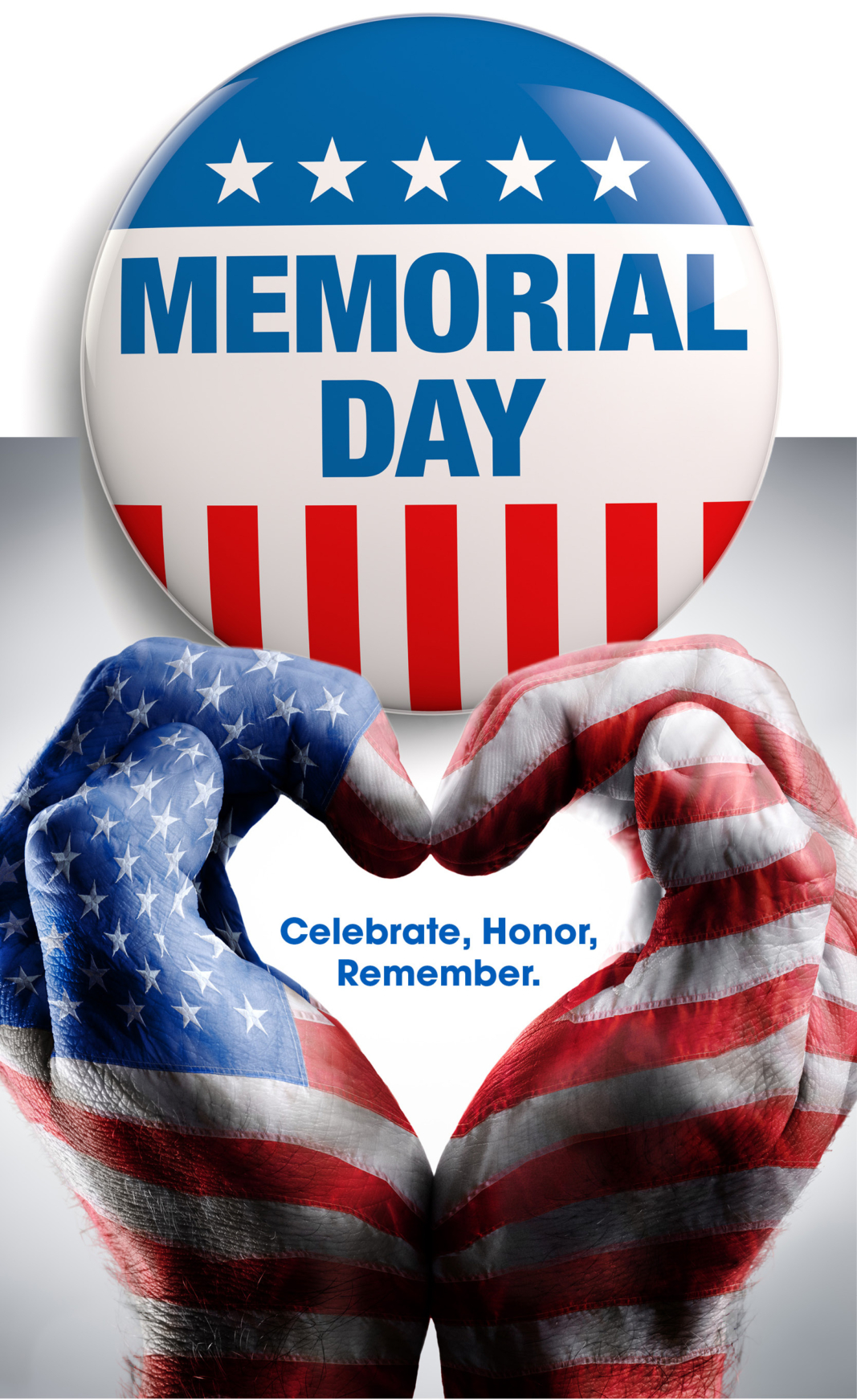
….AMEN!
We Salute You!
/0 Comments/in Friday Afternoon, Memorial Day /by Steve Kowalski
God Bless You!
Memorial Day
/0 Comments/in Flag, Friday Afternoon, Memorial Day /by Steve Kowalski
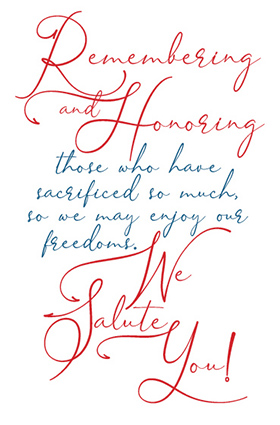
.
.
.
.
.
.
We Salute You
/0 Comments/in Friday Afternoon, Memorial Day, Trivia /by Steve Kowalski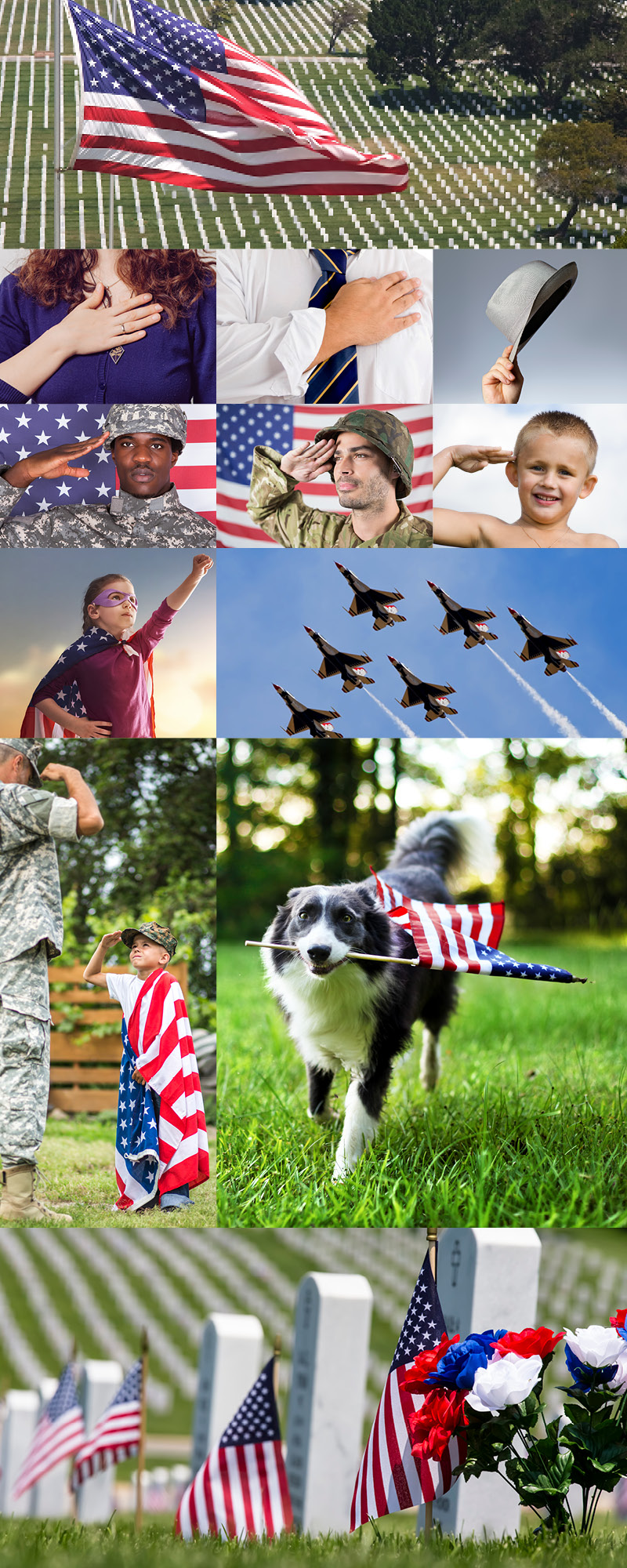
To those in uniform serving today and to those who have served in the past, we honor you today and every day.
With Memorial Day coming on Monday, I get all fired up. For me, there’s nothing quite like a parade. Colors, sounds, crowds, floats, marching, music, and sometimes candy for the kids. Growing up, I loved going to the parade with Mom and Dad and my brothers and sisters. – We’d ride our bikes and set up on “a good spot” so we could see everything up close. I can remember my siblings marching in place when the bands came, and how solemn my Dad would get when the servicemen would march by. And there was that special moment when I’d “salute” them, putting my hand to my head, just like the adults did. Now, later in life, this means so much more to me. Words come to mind, like sacrifice, commitment, camaraderie, valor, and honor – all words we hold dear, and most often apply to the military and the protections from fire and police.
So, in our KHT way – WE SALUTE YOU! For all you do, and for all you’ve done.
For my trivia buffs, a little extra info on the salute from our friends at Wikipedia – so the next time you use one, you’ll know just how meaningful and important it is. Enjoy.
- In military traditions of various times and places, there have been numerous methods of performing salutes, using hand gestures, cannon or rifle shots, hoisting of flags, removal of headgear, or other means of showing respect or deference.
- In the Commonwealth of Nations, only commissioned officers are saluted, and the salute is to the commission they carry from their respective commanders-in-chief representing the Monarch, not the officers themselves.
- In the United States Navy, United States Marine Corps, United States Coast Guard, United States Public Health Service Commissioned Corps, and other armed forces around the world, hand salutes are only given when a cover (protection for the head, usually a hat) is worn.
- The United States Army and United States Air Force give salutes both covered and uncovered, but saluting indoors is forbidden except when formally reporting to a superior officer or during an indoor ceremony. It should be noted that when outdoors, a cover is to be worn at all times when wearing Battle Dress Uniforms/Army Combat Uniforms, but is not required when wearing physical training gear.
- Some soldiers may salute with the left hand when the right hand is encumbered in some way (though it is rare).
- In the United States, civilians may salute the U.S. flag by placing their right hand over their heart or by standing at attention during the playing of the national anthem or while reciting the U.S. Pledge of Allegiance, or when the flag is passing by, as in a parade. Men and boys remove their hats and other headgear during the salute; religious headdress (and military headdress worn by veterans in uniform, who are otherwise civilians) are exempt.
- According to some modern military manuals, the modern Western salute originated in France when knights greeted each other to show friendly intentions by raising their visors to show their faces, using a salute. Others also note that the raising of one’s visor was a way to identify oneself saying “This is who I am, and I am not afraid.” Medieval visors were, to this end, equipped with a protruding spike that allowed the visor to be raised using a saluting motion.
- The US Army Quartermaster School provides another explanation of the origin of the hand salute: that it was a long-established military custom for subordinates to remove their headgear in the presence of superiors. As late as the American Revolution, a British Army soldier saluted by removing his hat. With the advent of increasingly cumbersome headgear in the 18th and 19th centuries, however, the act of removing one’s hat was gradually converted into the simpler gesture of grasping or touching the visor and issuing a courteous salutation.
- As early as 1745, a British order book stated that: “The men are ordered not to pull off their hats when they pass an officer, or to speak to them, but only to clap up their hands to their hats and bow as they pass.” Over time, it became conventionalized into something resembling our modern hand salute.
- The naval salute, with the palm downwards is said to have evolved because the palms of naval ratings, particularly deckhands, were often dirty through working with lines and was deemed insulting to present a dirty palm to an officer; thus the palm was turned downwards.
- When carrying a sword (beautifully heat treated of course), European military forces and their cultural descendants use a two-step gesture. The sword is first raised, in the right hand, to the level of and close to the front of the neck. The blade is inclined forward and up 30 degrees from the vertical; the true edge is to the left. Then the sword is slashed downward to a position with the point close to the ground in front of the right foot. The blade is inclined down and forward with the true edge to the left. This gesture originated in the Crusades. The hilt of a sword formed a cross with the blade, so if a crucifix was not available, a Crusader could kiss the hilt of his sword when praying, before entering battle, for oaths and vows, and so on. The lowering of the point to the ground is a traditional act of submission.
- When armed with a rifle, two methods are available when saluting. The usual method is called “present arms”; the rifle is brought to the vertical, muzzle up, in front of center of the chest with the trigger away from the body. Less formal salutes include the “order arms salute” and the “shoulder arms salutes.” These are most often given by a sentry to a low-ranking superior who does not rate the full “present arms” salute.
- A different type of salute with a rifle is a ritual firing performed during military funerals, known as a three-volley salute. In this ceremonial act, an odd number of rifleman fire three blank cartridges in unison into the air over the casket. This originates from an old European tradition wherein a battle was halted to remove the dead and wounded, then three shots were fired to signal readiness to reengage.
- The custom of firing cannon salutes originated in the Royal Navy. When a cannon was fired, it partially disarmed the ship, so needlessly firing a cannon showed respect and trust. As a matter of courtesy a warship would fire her guns harmlessly out to sea, to show that she had no hostile intent. At first, ships were required to fire seven guns, and forts, with their more numerous guns and a larger supply of gunpowder, to fire 21 times. Later, as the quality of gunpowder improved, the British increased the number of shots required from ships to match the forts.
- The system of odd numbered rounds originated from Samuel Pepys, Secretary to the Navy in the Restoration, as a way of economizing on the use of powder, the rule until that time having been that all guns had to be fired. Odd numbers were chosen, as even numbers indicated a death.
- As naval customs evolved, the 21-gun salute came to be reserved for heads of state, with fewer rounds used to salute lower-ranking officials. Today, heads of government, cabinet ministers, and military officers with five-star rank receive 19 rounds; four-stars receive 17 rounds; three-stars receive 15; two-stars receive 13; and a one-star general or admiral receives 11. These same standards are currently adhered to by ground-based saluting batteries.
- A specialty platoon of the 3rd US Infantry Regiment (The Old Guard), the Presidential Salute Battery is based at Fort Myer, Virginia. The Guns Platoon (as it is known for short) has the task of rendering military honors in the National Capital Region..
- A ceremonial or celebratory form of aerial salute is the flypast (known as a “flyover” in the United States. Primarily displayed during funerals, they began with simple flypasts during World War I and have evolved into the missing man formation, where either a formation of aircraft is conspicuously missing an element, or where a single plane abruptly leaves a formation. A casual salute by an aircraft, somewhat akin to waving to a friend, is the custom of “waggling” the wings by partially rolling the aircraft first to one side, and then the other.
- Historically, when men normally wore hats out of doors, male greetings to people they knew, and sometimes those they did not, involved touching, raising slightly (“tipping”), or removing their hat in a variety of gestures. This basic gesture remained normal in very many situations from the Middle Ages until men typically ceased wearing hats in the mid-20th century.
- Hat-raising began with an element of recognition of superiority, where only the socially inferior party might perform it, but gradually lost this element; King Louis XIV of France made a point of at least touching his hat to all women he encountered. When a man was not wearing a hat he might touch his hair to the side of the front of his head to replicate a hat tipping gesture. This was typically performed by lower class men to social superiors, such as peasants to the land-owner, and is known as “tugging the forelock”.
- In Europe, the formal style of upper-class greeting used by a man to a woman in the Early Modern Period was to hold the woman’s presented hand (usually the right) with his right hand and kiss it while bowing, This style has not been widespread for a century or more. In cases of a low degree of intimacy, the hand is held but not kissed. The ultra-formal style, with the man’s right knee on the floor, is now only used in marriage proposals, as a romantic gesture.
FLY YOUR FLAG IN MEMORIAL
/0 Comments/in Friday Afternoon, Memorial Day, Trivia /by Steve Kowalski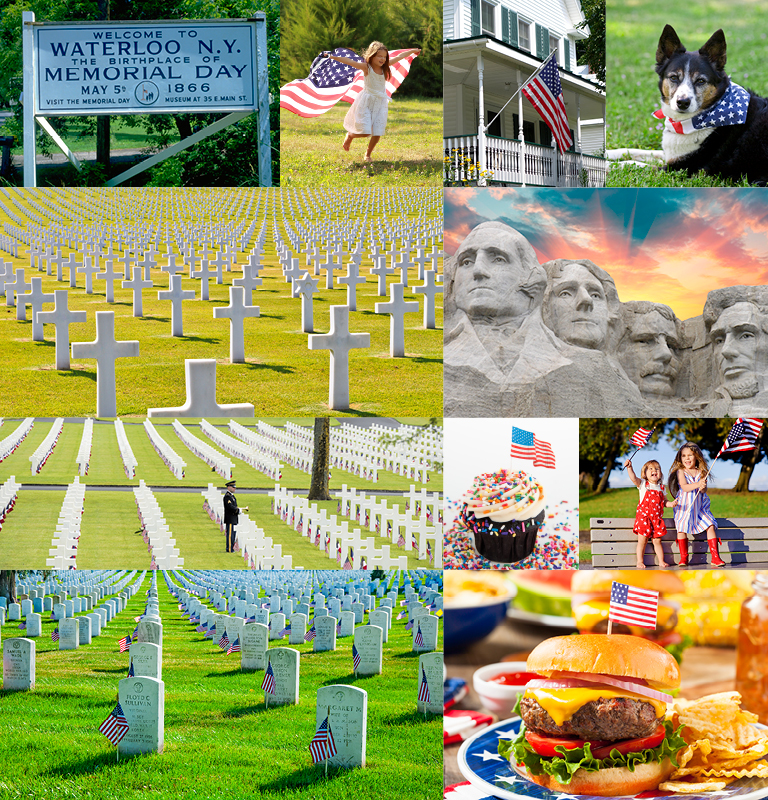
(row two first image) American War Cemetery (World War II), Florence, Tuscany, Italy — Photo by Bertl123; (row three first image) Belleau, Northern France – MAY 24, 2015: memorial day at American cemetery — Photo by njaj; (row four first image) Arlington Cemetery on Memorial Day on May 27, 2013, in Washington, D.C, USA — Photo by dinhhang. The rest of the images need no caption.
While most of us will celebrate Memorial Day as a day off work, let’s also use it to remember our fallen and all those who have served so bravely to defend and protect our great nation. At KHT, we honor all those who serve, and have served, and put you in our heartfelt prayers for your tremendous sacrifice. Here’s a little trivia for those of you interested in being the smartest person at the family cookout. Enjoy, and special thanks to Wikipedia and history.com for the additional insights.
- Memorial Day is an American holiday, observed on the last Monday of May, honoring the men and women who died while serving in the U.S. military.
- Originally known as Decoration Day, it originated in the years following the Civil War and became an official federal holiday in 1971. Many Americans observe Memorial Day by visiting cemeteries or memorials, holding family gatherings and participating in parades.
- The practice of decorating soldiers’ graves with flowers is an ancient custom. Soldiers’ graves were decorated in the U.S. before and during the American Civil War. Following President Abraham Lincoln’s assassination in April 1865, there were a variety of events of commemoration.
- The sheer number of soldiers of both sides who died in the Civil War (more than 600,000) meant that burial and memorialization took on new cultural significance. Under the leadership of women during the war, an increasingly formal practice of decorating graves had taken shape. In 1865, the federal government began creating national military cemeteries for the Union war dead. The Richmond Times-Dispatch newspaper claimed in 1906 that Warrenton, Virginia, was the location of the first Civil War soldier’s grave ever to be decorated; the date cited was June 3, 1861.
- By the late 1860s, Americans in various towns and cities had begun holding springtime tributes to the countless fallen soldiers, decorating their graves with flowers and reciting prayers. It is unclear where exactly this tradition originated; numerous different communities may have independently initiated the memorial gatherings. Nevertheless, in 1966 the federal government declared Waterloo, NY as, the official birthplace of Memorial Day, chosen because it hosted an annual, community-wide event, during which businesses closed and residents decorated the graves of soldiers with flowers and flags.
- Memorial Day did not become the more common name until after World War II, and was not declared the official name by Federal law until 1967. On June 28, 1968, Congress passed the Uniform Monday Holiday Act, which moved four holidays, including Memorial Day, from their traditional dates to a specified Monday to create a convenient three-day weekend. The change moved Memorial Day from its traditional May 30 date to the last Monday in May. The law took effect at the federal level in 1971. After some initial confusion and unwillingness to comply, all 50 states adopted Congress’ change of date within a few years.
- In 1915, following the Second Battle of Ypres, Lieutenant Colonel John McCrae, a physician with the Canadian Expeditionary Force, wrote the poem, “In Flanders Fields”. Its opening lines refer to the fields of poppies that grew among the soldiers’ graves in Flanders. In 1918, inspired by the poem, YWCA worker Moina Michael attended a YWCA Overseas War Secretaries’ conference wearing a silk poppy pinned to her coat and distributed over two dozen more to others present. In 1920, the National American Legion adopted it as their official symbol of remembrance.
- On Memorial Day, the flag of the United States is raised briskly to the top of the staff and then solemnly lowered to the half-staff position, where it remains only until noon. It is then raised to full-staff for the remainder of the day. The half-staff position remembers the more than one million men and women who gave their lives in service of their country. At noon, their memory is raised by the living, who resolve not to let their sacrifice be in vain, but to rise-up in their stead and continue the fight for liberty and justice for all.
- In 2000, Congress passed the National Moment of Remembrance Act, asking people to stop and remember at 3:00 P.M.
- The National Memorial Day Concert takes place on the west lawn of the United States Capitol. The concert is broadcast on PBS and NPR. Music is performed, and respect is paid to the men and women who gave their lives for their country.
- For many Americans, the central event is attending one of the thousands of parades held on Memorial Day in large and small cities all over the country. Most of these feature marching bands and an overall military theme with the National Guard and other service personnel participating along with veterans and military vehicles from various wars.
- One of the longest-standing traditions is the running of the Indianapolis 500, an auto race which has been held in conjunction with Memorial Day since 1911. It runs on the Sunday preceding the Memorial Day holiday. Other weekend events include NASCAR’s Coca-Cola 600, held later the same day since 1961, the PGA Memorial Tournament golf event and the final of the NCAA Division I Men’s Lacrosse Championship.
- On Memorial Day weekend in 1988, 2,500 motorcyclists rode into Washington, D.C. for the first Rolling Thunder rally to draw attention to Vietnam War soldiers still missing in action or prisoners of war. By 2002, the ride had swelled to 300,000 bikers, many of them veterans, and today reaches one million riders. A national veterans rights group, Rolling Thunder takes its name from the B-52 carpet-bombing runs during the war in Vietnam.
- Now, no holiday can be complete without food! Americans will eat 818 hot dogs per second on Memorial Day. That’s a few wieners short of 71 million in a day. And as for that summer statistical symmetry, Memorial Day leads up to the number one barbecue event, July 4 before coasting down into Labor Day (a close third at 55 percent).
- The grilling gurus at the Hearth, Patio & Barbecue Association say the top choices for grilling will be burgers (85%), steak (80%), hot dogs (79%) and chicken (73%), with no sign of tofu turkey anywhere in the ratings. Hickory is the top flavor of barbecue sauce, followed by mesquite, honey, and spicy-hot.
Enjoy your family and friends and please remember to say a prayer for our fallen.
.
.
.
.
God Bless America and Our Veterans
/0 Comments/in Friday Afternoon, Memorial Day /by Steve Kowalski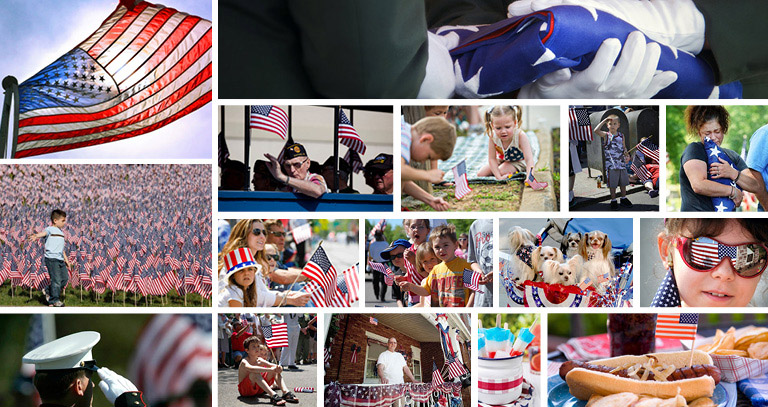
This Memorial Day, we salute our veterans for their courage and commitment. Take time this weekend with the kids and grandkids and attend a local ceremony and parade in your hometown. Here’s a handy list for our northeast Ohio friends and families.
Parades and Ceremonies:
- Aurora: Parade on May 30 at 10 a.m. at Veterans Memorial Park.
- Avon Lake: Ceremony at Veterans Park on May 30 at 10 a.m. with parade to follow.
- Bath Township: Observance on May 30 at noon at Bath Veterans’ Memorial Park.
- Bay Village: Parade on May 30 at 8:30 a.m. at Huntington Park.
- Bedford: Parade on May 30 at 10:15 at City Hall.
- Berea: Cemetery services at Adams St. Cemetery (8am) Woodvale (9 am) Parade at 10:30.
- Broadview Heights: Parade/ceremony on May 30 at 11 a.m. at Crossings Shopping Center.
- Brunswick: Program and parade on May 30 at 10 a.m. at Vistintainer School.
- Cleveland Heights: Ceremony on May 30 at 10:30 a.m. at Cumberland Park.
- Fairview Park: Observance on May 30 at 8 a.m. in the City Hall Rotunda. Parade at 9 a.m.
- Garfield Heights: Services on May 30 at 10 a.m. at the Civic Center Veterans Plaza.
- Green: Parade and ceremony on May 30 at 7 a.m. at the Green High School parking lot.
- Hudson: Parade on May 30 at 8 a.m., starting at Milford Road and Veterans Way.
- Jackson Township: Field of Honor from May 27 to May 30, Fulton Road and Wales Avenue.
- Lake View Cemetery: (Cleveland) Celebration Garfield Memorial on May 30 at 10:30 a.m.
- Mentor-on-the-Lake: Annual Parade at 1 p.m. on May 29.
- North Ridgeville: Parade on May 30 at 9:45 a.m., beginning at the Marc’s parking lot.
- Painesville: Parade/commemoration at 10 a.m. on May 30, starting at Riverside Cemetery.
- Riverside Cemetery: (Cleveland) Service and dedication ceremony on May 30 at 9:30 a.m.
- Shaker Heights: Parade on May 30 at 9:30 a.m. Lee Road and Van Aken Boulevard.
- Strongsville: Service at Freedom Trail Gazebo on May 30 at 11 a.m. Parade is canceled.
- Suffield Township: Parade on May 30 at 2 p.m.
- Tallmadge: American Legion Memorial Day Parade at May 30 at 10 a.m. at Circle Park.
- University Heights: 50th Parade on May 30 at 11 a.m., beginning at Silsby Road.
- Westlake: Parade on May 30 at 10 a.m. at Clague Park.
- Wickliffe: Parade on May 30 at 10 a.m., corner of Euclid Avenue and Worden Road.
- Willoughby: Parade on May 30 at 9:30 a.m. in downtown Willoughby.
Festivals and fun:
- Berea’s National Rib Cook-Off: May 27 to 30 at the Cuyahoga County Fairgrounds.
- Blossom Time: May 26 to May 30 in downtown Chagrin Falls. Cedar
- Point Armed Forces Memorial Day Weekend: May 27 to May 30. Free to vets.
- Cleveland Metroparks Zoo KidsDays: May 28 to May 29 from 10 a.m. to 7 p.m. Special demonstrations with lions, elephants, and sea lions, as well as an interactive gaming zone.
- Tremont Greek Fest: May 27 to 30 at Annunciation Greek Orthodox Church.
The day of hot dogs, tears and flags.
/0 Comments/in 40th Anniversary, Friday Afternoon, Memorial Day /by Steve Kowalski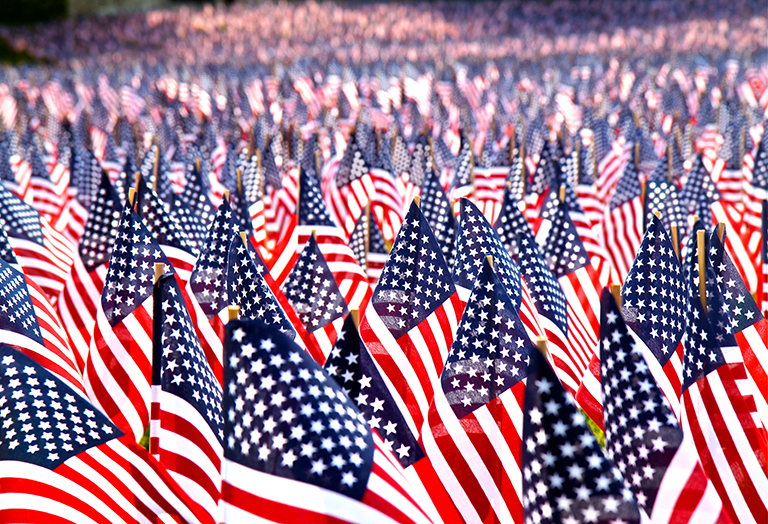
Memorial Day. A day to remember why we get this day off. A day to remember that freedom is not free. It must be protected, nurtured and respected. So enjoy this day off. Have a hot dog. And give thoughts, even prayers to your countrymen & women who are serving in our military, have served and who have given up their lives to make freedom mean something uniquely American. God bless. See you next week.


